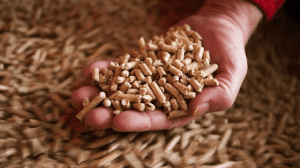
Caris Ukraine LLC (Kyiv), controlled by South Korean Caris, intends to buy out the shares of minority shareholders of Strila crane building company (Brovary, Kyiv region), in which it owns 89.837% of shares.
According to the public irrevocable demand published in the information disclosure system of the National Securities and Stock Market Commission of Ukraine, the shares from the minority shareholders will be redeemed at UAH 129.4 per share (with a par value of UAH 110).
The charter capital of JSC Strila is UAH 6.21 million.
At present, Strila plant, which employed ten people by the beginning of this year, does not carry out production activities (since 2015), and receives main income from the sale of materials and partial lease of premises.
Caris, according to its information, has enterprises in many countries of the world, construction, logistics companies, companies for the production of innovative materials and components for road construction and traffic safety, and also has an R&D center that owns patented innovative technologies for the production of polymer and superhard materials used in heat power engineering, industrial electronics and mechanical engineering.

British-based Ferrexpo Plc, which in Ukraine, in particular, controls Poltava and Yeristovo ore mining and processing plants (Poltava GOK and Yeristovo GOK), in January-November of this year, according to recent data, increased the total production of pellets by 5% compared to the same the period of 2019, to 10.16 million tonnes.
A representative of the company informed Interfax-Ukraine that during this period the output of concentrate increased by 4.8%, to 12.7 million tonnes.
In November, the company produced 980,000 tonnes of pellets and 1.2 million tonnes of concentrate.
According to the company, Ferrexpo in the first quarter of 2020 compared to the same period in 2019 increased its total pellet production by 7.4%, to 2.725 million tonnes. In particular, the production of pellets with a 65% iron content was 2.652 million tonnes (an increase of 9.1%), with a 62% iron content some 73,330 tonnes (a decrease of 31.8%).
In the second quarter of this year, Ferrexpo increased its pellet production by 5.4% from the previous quarter, to 2.873 million tonnes, in particular it produced 2.848 million tonnes of pellets with a 65% iron content (an increase of 7.4%), 24,700 tonnes with a 62% iron content (a decrease of 66.3%).
In the third quarter of 2020, total pellet production decreased by 12% compared to the second quarter, to 2.537 million tonnes from 2.873 million tonnes, while no pellets with a 62% iron were produced.
Ferrexpo is an iron ore company with assets in Ukraine.
Ferrexpo owns 100% of shares in Poltava GOK, 100% in Yeristovo GOK and 99.9% in Belanovo GOK.

More than 70% of beds allocated for patients with COVID-19 are provided with oxygen today in Ukraine, Deputy Minister of Health, Chief Sanitary Doctor of Ukraine Viktor Liashko said.
“Today, more than 70% of all beds allocated for COVID-19 are provided with oxygen. Now 55-60% of those hospitalized need oxygen treatment,” Liashko wrote on his Facebook page.
He said that 64,349 beds have been redesigned in hospitals to provide medical care for people with COVID-19, of which 44,436 are oxygen beds, which is almost 70% of all allocated beds.
“Today in hospitals we have 29,487 free beds with oxygen. On average, 55-60% of those hospitalized with COVID-19 need oxygen support,” he said.
Structure of import of services in the first half of 2020 (graphically).


The neighboring countries of Ukraine, in addition to Poland, Belarus and the Russian Federation, are in the “red” zone for COVID-19, according to data published on the website of the Ministry of Health as of December 24.
The “red” zone includes countries with an incidence rate per 100,000 population over the past 14 days higher than in Ukraine (374). There are 45 countries in total.
Of the closest neighbors of Ukraine, the “red” zone includes Slovakia (634,900 cases of COVID-19 per 100,000 population), Moldova (460,400), Romania (400,300) and Hungary (521,700).
Lithuania, Georgia, Slovenia, U.S., Montenegro, Sweden, the Netherlands, Czech Republic, Switzerland, Great Britain, Turkey, Austria, Germany are also among the countries of the “red” zone.
The list of countries of the “green” zone includes, in particular, Italy, Israel, Belgium, France, Canada, Spain, Greece, Japan, India, and Egypt.
Of the closest neighbors of Ukraine, the “green” zone includes Belarus (279 cases per 100,000 of the population), the Russian Federation (206,900) and Poland (366,700).

According to preliminary results, Ukraine International Airlines (UIA) carried 1.787 million passengers from January to December 2020, which is four times less than the result for 2019 (about 8 million passengers).
The press service of the company reported that during the specified period, UIA operated about 17,000 regular and code-share flights, which is 72% less compared to the same indicator for 2019. The percentage of transit passengers amounted to 43% of the total traffic (486,000 passengers, 86% less).
The company also noted that in 2020 it transported more than 4,800 tonnes of cargo (15,000 tonnes in 2019) and 1,350 tonnes of mail (4,400 tonnes in 2019).
“Due to the COVID-19 pandemic and government decisions to ban flights, the airline was forced to cancel thousands of flights and, as a result, the airline received thousands of requests for refunds. In the period from April to November 2020, some 85,861 passenger requests and returns in the amount of almost $ 22 million were processed. By this time, about 56,000 unprocessed applications for refunds were recorded. UIA employees carefully record each appeal and process them in turn,” UIA added.
The airline noted that during the lockdown, UIA optimized its work: it reduced its expenditures by three times, optimized its fleet and proportionally cut its staff by about 1,000 people.